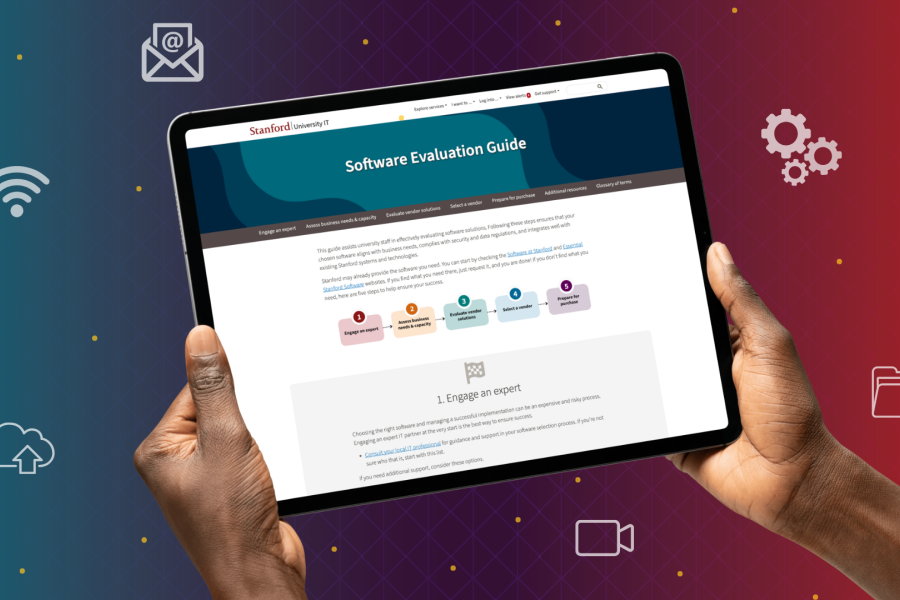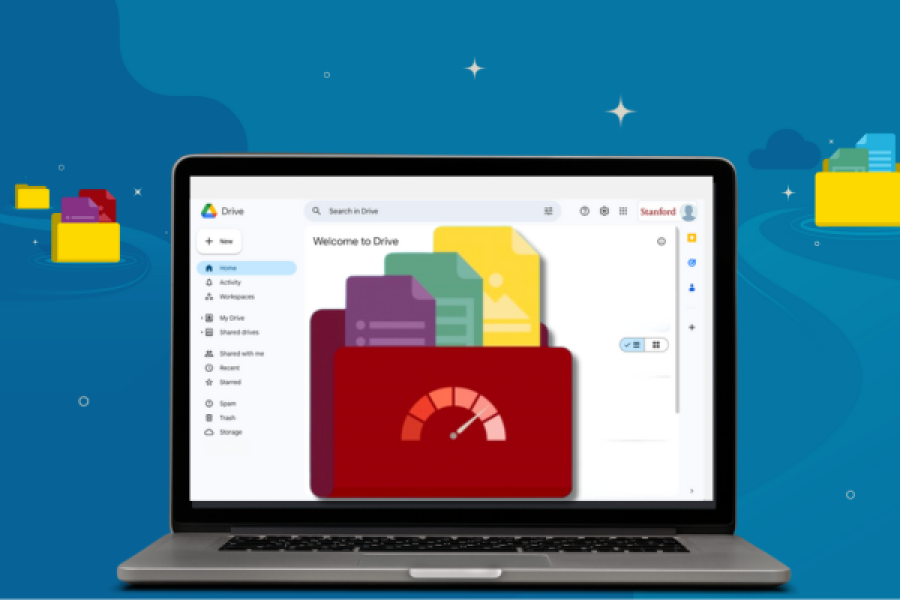Updated January 21, 2025: The university has set a 5 TB limit for Google Workspace. This supersedes any previously communicated limits. Learn more.
As we shared in an earlier announcement, Google will no longer provide higher education institutions with unlimited storage at no charge. To adapt to this change, the university is introducing new policies that optimize our storage solutions to benefit the Stanford community.
Rest assured, Google Workspace remains the university’s preferred tool for productivity and collaboration. As we update how we manage the service, you’ll continue to have access to My Drive; shared drives; Google Docs, Sheets, and Slides; and the other Google services you currently use.
What's changing, and what it means for you
While the vast majority of us will continue to use the completely free base Google Workspace service and not be required to move or reduce data, some individuals will need to take action due to the following changes:
- A 50 Gigabyte (GB) storage limit will be applied to My Drive and each shared drive effective Sept. 1, 2024.
- Those who exceed the 50 GB threshold but use less than 500 GB of storage will be granted an automatic extension that will provide a grace period until at least Sept. 1, 2025.
- Those who require more space than the storage limit provides may purchase additional storage at the rate of $0.15 per GB per year in Fiscal Year 2025 starting Aug. 1, 2024. (Charges for the purchased storage will begin Sept. 1, 2024.)
To see if you're affected by the storage limit, check how much storage you have in Google Drive by logging into your university account and going to https://drive.google.com/settings/storage.
Next, refer to the following guidelines:
- Your storage use is less than 50 GB: More than 95% of university accounts fall under the storage limit. If you’re in this group, you’re not required to take action. Nonetheless, you’re encouraged to follow best practices and consider cleaning up the data in your accounts.
- Your storage use is between 50 and 500 GB: About 4% of university accounts are in this range. If you’re in this group, there’s no immediate action for you to take. However, you should plan to reduce storage below 50 GB (or purchase more storage) by Sept. 1, 2025, when the grace period ends.
- Your storage use exceeds 500 GB: Slightly less than 1% of university accounts contain more than 500 GB of content. If you’re in this group, keep an eye on your inbox for an email with guidance on actions you'll need to take to comply with the storage limit by Sept. 1, 2024. This email will include links enabling you to schedule a personalized storage consultation with our dedicated support team or navigate to a new storage menu that provides a comprehensive comparison of pricing and features.
If your drive exceeds the storage limit
If your account surpasses the storage limit (500 GB starting Sept. 1, 2024, and 50 GB starting Sept. 1, 2025), you’ll be asked to provide a PTA to pay for any additional storage you use. If you don’t provide a PTA, your account will go into a “read-only” state until you reduce your usage or purchase more storage. More information about how to order and pay for storage will be provided soon.
Looking ahead
Although the storage limit is an important part of our reduction strategy, two additional changes will be rolled out later this year to complete the transition to a more sustainable Google Workspace storage model. Details on these initiatives will be shared when they become available:
- Shared drive creation: An updated and automated process will be introduced for those who would like to create new shared drives.
- Account lifecycle management: Inactive accounts owned by individuals who have left Stanford may be frozen (transitioned to read-only), then archived, and eventually deleted. Please check the Google Workspace Optimization project webpage for more information and watch for communications from University IT (UIT).
Please check the Google Workspace Optimization project webpage for more information and watch for communications from University IT (UIT).
Where to get more information
Here are other resources you may find helpful:
- Visit the FAQs for answers to common questions, including questions about Gmail.
- Visit UIT’s How to Clean Up Google Drive for tips on how to delete content.
- To review the previous announcement on this topic, refer to Navigating the Next Era of Google Workspace for Education.
Questions or support
If you need support, we're here to help.



